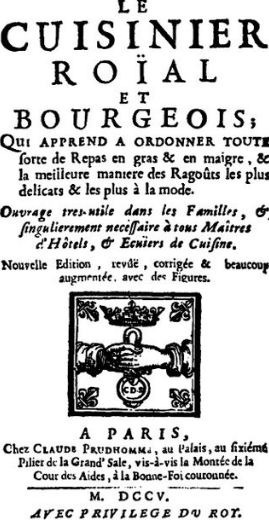Over the years, the significance of culinary arts had developed in a more advanced stage. Several chefs and food experts contributed to its development, which resulted in the modern knowledge we know today. History’s greatest chefs have discovered various food recipes; most of these recipes continue to be a significant part of today’s culinary world.
France is recognized as the home for many exquisite and unique dishes. Many French restaurants could be found in different parts of the globe, showcasing the country’s finest cuisines. Besides excellent dishes and luxurious restaurants, the country also boasts its talented chefs. For hundreds of years ago, France already built its reputation in the culinary world, being able to discover diverse cooking styles and recipes. One of the most famous French chefs known to have contributed to this advancement is the chef de cuisine: François Massialot.
As mentioned earlier, François Massialot is a French chef who is widely known as a chef de cuisine to various French noblemen. Massialot served as the chef for Philippe I Duke of Orleans, Philippe II Duke of Orleans, Cardinal d’Estrees, and the marquis de Louvois. He was known to have served banquets for kings and queens, building himself a solid reputation as a credible chef.
Besides serving as an executive chef for royal families, Massialot is also known to be a writer. He compiled numerous writings about his cooking journey, including his recipes and methodology. Historians state that the book of Massialot was innovative, mainly because of its recipes arranged alphabetically.
Because of François Massialot’s outstanding work in the field, his name became known worldwide. Furthermore, Massialot’s greatness is also credited for the invention of the well-known crème brulèe, as well as his association with the meringues, which are both popular desserts until today.
What is the Meringue?
Most of us may already be aware of the delicious taste of the meringue. It is a dessert that looks like candy, which is usually found in European cuisines. The meringue is primarily made from whipped egg whites and sugar, combined with the right amount of flavorings and other ingredients. Meringues are known for their light and airy presentation, along with a highly sweet flavor. Many variations of the meringue were made depending on the consumers’ taste; some are overall crispy, while others have a soft and chewy interior.
Despite not having any concrete record in history, it is believed that we can trace back the origins of the meringue to the Swiss village of Meiringen during the 17th century. Furthermore, the original version of the meringue was then improved by the Italian chef named Gasparini, resulting in a better version of the dessert.
Interestingly, the name meringue was first seen in Massialot’s cookbook in the late 17th century; it showcased a more precise definition of the pastry.
What is Crème Brulèe
Similar to the meringue, the crème brulèe is a popular dessert that originated hundreds of years ago. It is a sweet dessert that is also known as burned cream, burnt cream, or Trinity cream, mainly because of its iconic burnt appearance. The crème brulèe is made of a custard base, along with its iconic slightly burnt top – which is caramelized sugar. Various flavors are available in the crème brulèe, but vanilla is its primary flavor. Like most desserts, the crème brulèe is served slightly chilled to maximize its flavors.
As mentioned earlier, the invention of the crème brulèe could be attributed to the great French chef: François Massialot. The crème brulèe first appeared in Massialot’s famous cookbook in 1691, which showed the recipe for this dessert. It was translated in English as ‘burnt cream,’ mainly for its burnt appearance.
However, the tasty dessert somehow became forgotten until the late 20th century. The crème brulèe was reintroduced to the public in the 1980s after a new version of it was made and served in restaurants. During this time, crème brulèe was considered one of the most popular desserts, thanks to the Italian restaurateur: Sirio Maccioni. Maccioni was known to serve this sweet dessert in his restaurant in New York, the Le Cirque.

